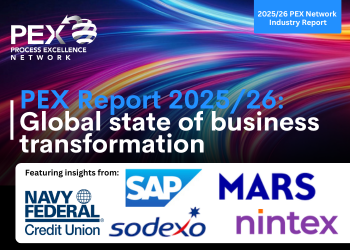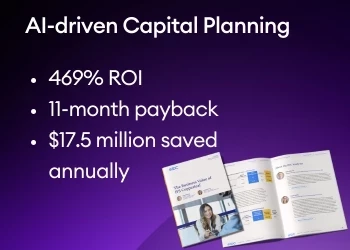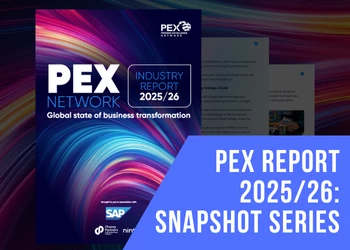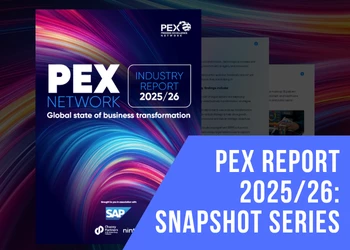What is second-order thinking?
We delve into what second-order thinking is and how you can develop this critical skill to enhance your decision-making process
Add bookmark
Jeff Bezos, Steve Jobs and Elon Musk have many obvious things in common – building hugely successful global businesses that have become household names, and becoming billionaires as a result. However, another element that links them is their approach to decision-making, applying a mental model called second-order thinking.
This methodology has been growing in popularity among government policy makers and business leaders, and is even widely used to make personal decisions. Here we delve into what second-order thinking is and how you can develop this critical skill to enhance your decision-making process.
Join the PEX Network community

Don't miss any news, updates or insider tips from PEX Network by getting them delivered to your inbox. Sign up to our newsletter and join our community of experts.
Learn MoreUnderstanding the concept of second-order thinking
Second-order thinking is an approach that involves considering the long-term effects of actions beyond their immediate outcomes. Essentially, it involves asking “and then what?” before making a decision, to prevent unintended consequences and allow for more strategic and effective problem-solving. To better understand the concept, it can be compared with “first-order thinking.”
First-order thinking: This involves looking at the immediate, obvious outcomes of a decision without considering the broader impact. For instance, if a company decides to lower its prices to attract more customers, first-order thinking might suggest this is a good idea because it will likely increase sales. However, this doesn’t account for the longer-term consequences, such as whether you can afford to keep these costs low in the future or the possibility of customers abandoning you if you need to raise prices again.
Second-order thinking: Using the same example, a second-order thinker would consider what might happen after the price reduction. Will the lower prices lead to lower profit margins? Could it lead to lower quality products? What impact will this have on customer loyalty? By asking these questions, second-order thinking provides a better understanding of the potential impact of the decision.
The benefits of second-order thinking
As well as considering the long-term consequences, here are some additional reasons why this type of thinking is important:
- Strategic advantage: Thinking long-term provides a competitive edge. By anticipating the long-term effects of decisions, businesses can develop strategies that are more sustainable and effective over time.
- Improved problem-solving: Asking “and then what?” can help solve complex problems by considering multiple outcomes and identifying solutions. This helps address the root cause rather than just the symptoms of a problem.
- Improved risk assessment: Second-order thinking is effectively a form of risk assessment, enabling you to identify both immediate and more long-term risks, and therefore put solutions in place ahead of time.
How to apply second order thinking
As mentioned above, a very simple way to apply this strategy is asking yourself about potential consequences before making a decision. Here are a few other ways you can put this into practice:
- Consider different perspectives: Think about all the stakeholders involved in your business and how they will be affected by a decision over time. Try to put yourself in the shoes of various individuals or groups who might be impacted by your decision. This broader perspective can reveal long-term consequences that you might not have initially considered.
- Think long-term: Practice shifting your focus from short-term gains to long-term sustainability. Consider not just the immediate benefits but also how those benefits might change over time. Will they still be beneficial in a year, five years or 10 years from now?
- Scenario planning: Scenario planning and second-order thinking go hand in hand, as this involves imagining different scenarios that could result from a particular decision. By exploring these you can identify potential consequences and be better prepared for them.
- Learn from past experience: Reflect on past decisions and their outcomes. Were there any unintended consequences that you didn't anticipate? By considering these past experiences, you can improve your ability to think ahead and anticipate future outcomes.
Second-order thinking in action
To illustrate the power of second-order thinking, let's look at a few real-world examples:
Jeff Bezos and AWS
It took around 10 years for Jeff Bezos to reap the benefits of Amazon Web Service (AWS), the leading cloud data storage system. Back in 2003, it was a time-consuming task for the engineers to develop as well as a huge investment, not least because Amazon was merely an online music and books provider that was barely making a profit shortly after the dot.com crash. However, Bezos persevered and today AWS outpaces its competitors and is Amazon's most profitable segment.
Bezos has always been clear about thinking long-term. In his book, Invent & Wander: The Collected Writings of Jeff Bezos, he said that he was “always working in the future.” Bezos wrote: “When I have a good quarterly conference call with Wall Street, people will stop me and say, ‘Congratulations on your quarter,’ and I say, ‘Thank you,’ but what I’m really thinking is that quarter was baked three years ago.”
Steve Jobs and Apple
The leadership style of the late Steve Jobs is so highly regarded that academic papers have been written about it, in particular about his focus on innovation rather than short-term profits. His leadership style included problem-solving sessions with his team where they would identify possible bottlenecks and issues that could arise in the future.
Jobs famously favored design detail and the functionality of Apple’s products over sales volumes. Additionally, he wasn’t interested in profiting from individual products; instead he aimed to attract customers into Apple’s ‘ecosystem’ by creating multiple types of devices as well as software and proprietary technology tying them altogether. As a result, Apple has incredibly loyal customers with a retention rate of more than 90 percent.
Elon Musk and Tesla
While Elon Musk has become a controversial figure in recent years he is still hailed as a visionary by many. Author Lee Nallalingham wrote: “One of the most striking things about Musk is his willingness to set seemingly impossible goals and then work tirelessly to achieve them. He has a long-term vision for his companies and is not afraid to think big and take risks.”
Musk refers to his method as “first principles thinking,” which much like second-order thinking, essentially involves questioning every assumption about a given problem or scenario and then identifying solutions.
His long-term strategy for electric car company Tesla was laid out in the company’s 2006 ‘master plan’ which included building a high-end electric car, using the profits to create a more affordable vehicle and then using those profits to build an even more affordable car. This enabled Tesla to gradually scale up, continuously improve its technology and drive down costs, passing this benefit on to customers.
PEX Report 2025/26: Global state of business transformation

The PEX Report 2025/26 examines the results of our annual survey of more than 200 professionals with insights from more than a dozen industry business and thought leaders from across the globe. Contributors include leaders from Mars, Navy Federal Credit Union, Pacific International Lines, Sodexo, SAP and Nintex!
Explore why true business transformation is not a singular project but an ongoing journey, one that requires visionary leadership, cross-functional collaboration, technological prowess and an unrelenting commitment to agility and innovation. Those that embrace this evolution holistically are not just surviving the future, they are shaping it!
Download NowImage: Wcamp9, CC BY 4.0 via Wikimedia Commons














